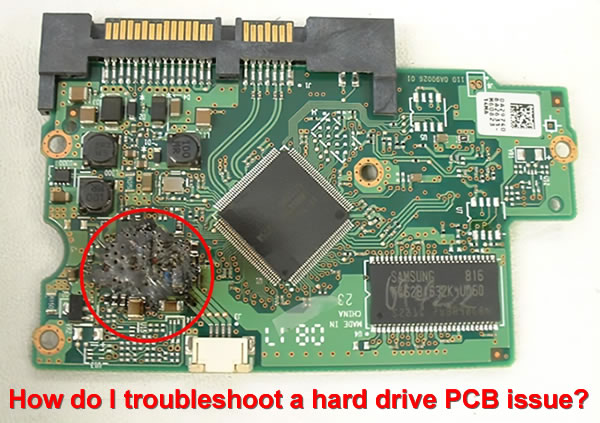Here are some steps to troubleshoot a hard drive PCB issue:

1. Check the power supply: Make sure that the hard drive is receiving power by checking the power cable and the power supply unit. If the hard drive is not receiving power, it may be a power supply issue rather than a PCB issue.
2. Listen for unusual sounds: If the hard drive is making unusual sounds, such as clicking or grinding noises, it may indicate a mechanical issue rather than a PCB issue.
3. Check for burnt components: Inspect the PCB for any burnt components such as resistors, capacitors, or chips. Burnt components can indicate a PCB issue.
4. Check for physical damage: Inspect the PCB for any physical damage such as scratches, cracks, or bent pins. Physical damage can cause PCB issues.
5. Swap the PCB: If you have an identical hard drive, you can try swapping the PCB to see if the hard drive is recognized by the system. This can help determine if the issue is with the PCB or the hard drive itself.
It's important to note that PCB issues can be complex and require specialized tools and expertise to diagnose and repair. Therefore, it's recommended to seek professional help from a data recovery specialist who can perform a detailed evaluation of your hard drive and identify the cause of the issue.




